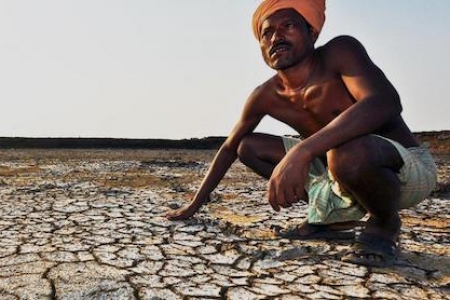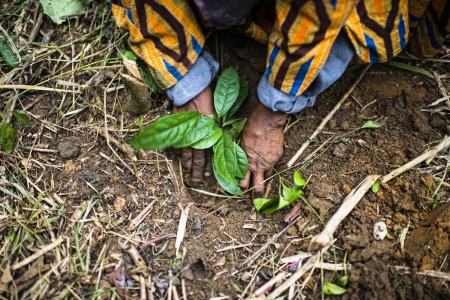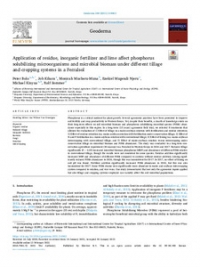There is an on-going wave underway on agricultural intensification and one of its major objectives is improving food production and soil fertility by increasing nutrient application rates several-folds of magnitude on small-holder farms. While crop yields increase significantly with added fertilizer, the environmental impacts of these additions in nutrient-depleted African soils are largely unknown. Several efforts are being made to evaluate and recommend productivity components of food and feed crop varieties through selected soil and crop management technologies at farm scale, there is little understanding of the water and nutrient flows and their potential impacts within farming systems at the landscape level. The proposed research builds on on-going efforts being conducted in three agro-ecological zones of sub-Saharan Africa specifically in mid-central Tanzania with differing soils and landscape mosaics (tree cover). The study combines field-based measurements and modeling to arrive at an integrated landscape framework for evaluating water and nitrogen (N) management and loss pathways in degraded landscapes that are undergoing agricultural intensification. W1&W2 funds from WLE will be used to support linkage analysis studies from farm-scale to landscape level work. During the 2015/16 period, this work will look at crop/fertilizer farm-level trials that have forage strips. The underlying premise is to form model farms where integrated proven technologies can be tested and ultimately scaled up. This study is combining field scale measurements of soil moisture variation and nutrient fate monitoring with suction lysimeters on farmer’s fields. In-field measurements will be complemented with computer based simulations with the APEX model to model and generate feasible scenario options at landscape level that can guide scaling up of the viable interventions and technologies. Field-level data will be used to calibrate a system of integrated hydrology and ecologic modeling to quantify nitrate fluxes leaving crop root zones and entering groundwater and surface water systems. Combining hydrology and ecologic or nutrient transport models provides improved characterization of relevant parameters and processes, compared to a single model. The proposed activities provide crucial lessons for nested scale mosaics at the farm-scale to landscape interface. This activity is highly integrated and will enhance collaboration between research teams, farmers and agricultural extension agents. The latter group is crucial because they serve as knowledge vehicles that would provide viable recommendations for fertilizer application as well as feasible soil and water management strategies that take into account ecosystem based approaches. The success of any proposed interventions will depend on informed choices of where to place them in the landscape and what combination of technologies would yield the best-bet outcomes. Hence understanding these linked processes of change, their feed backs and synergies has a central importance in managing these human dominated agro-ecosystems. In essence this ushers in new ways of conceptualizing and managing water and nutrient fluxes in a manner that is interdisciplinary, integrative and multi-scalar with particular attention paid to the linkages across nested scales. Specifically, this activity will: i) Assess soil moisture and nutrient variations in crop-forage systems (entails measuring and detecting erosion, runoff and leaching losses); (2015) ii) Following up on field measurements in (i) above, conduct landscape level assessment of associated ecosystem responses on impacts of erosion and land degradation on water quality and nutrient retention under different crop-livestock systems in three agro-ecological zones;(2015) iii) Develop indicators and protocols for degradation assessments; and develop supporting data sets at farm scale to landscape level; (2015) iv) Develop stakeholder-driven score cards for ecosystem valuation, ranking and prioritization in terms of environmental integrity and livelihoods (2016). v) Building on above points, investigate relationships between multiple ES and human well being through participatory and biophysical approaches (2016); vi) Based on (ii) and (iii) above, provide feasible co-developed scenario recommendations for feasible ecosystem-based solutions that promote sustainable intensification and landscape restoration for crop-livestock systems and guide scaling up efforts. (2016)
menu











